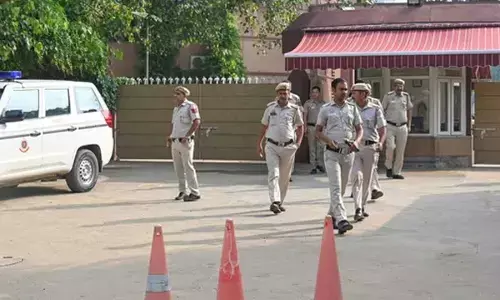The number of house sparrows increased from 7 to 70,000 in 17 years

Rushikulya Sea Turtle Protection Committee (RSTPC) turned their attention to protect the house sparrows.
Berhampur : Rushikulya Sea Turtle Protection Committee (RSTPC) turned their attention to protect the house sparrows. There were only 7 birds at Purunabandha. The RSTPC were able to spread their network in 18 districts of Odisha and now the number of house sparrows has increased to more than 70,000 in the last 17 years.
The RSTPC secretary, Rabindranath Sahu, who has dedicated his life for the conservation of animals and birds supported by 56 volunteers, has spent more than Rs 3 lakh from his pocket for the conservation of house sparrows in Odisha during these 17 years. There is no financial support from the State or the Union government, he said. “We spent money on purchasing specially-designed earthen pots, wooden boxes and places near the roof of some houses, where the birds can set up their nests. Feeder box and eco-friendly container for drinking water for the sparrows were provided. As it was a new concept, the response of the public was mixed. But now we are getting public support,” said Rabindranath.
Rabindranath was concerned over rapid decline in the population of house sparrows everywhere. “We want to spread the message regarding the need to protect sparrows and our main intention is to involve schoolchildren. We have involved more than 50 schools in Ganjam on this mission,” he said. Encroachment on green space, use of insecticides and pesticides, increase in pollution levels and radiation from cell phone towers have affected the reproduction of these birds. The sparrow’s main diet consists of grain and livestock feed. But they can adapt to any kind of diet if grain is not available. They also eat weeds and insects, especially during the breeding season. These birds usually prefer roofs of thatched or pucca houses for roosting. The sparrow makes its nest near human habitation. Construction of houses in rural areas is also another reason for the declining number of house sparrows.
In Odisha, house sparrow is popularly known as ‘ghara chatia’ ‘goraiya’ in the Hindi belt, ‘kuruvi’ in Tamil Nadu and Kerala, ‘pichhuka’ in Andhra Pradesh, ‘gubbachchi’ in Karnataka, ‘chakli’ in Gujarat, ‘chimani’ in Maharashtra, ‘chiri’ in Punjab, ‘chaer’ in Jammu and Kashmir, ‘charai pakhi’ in West Bengal, ‘chirya’ in Urdu and ‘jhirki’ in Sindhi.
The RSTPC launched its protection of Olive Ridley sea turtles in 1993 and is now focusing on protection of weaver birds, peacocks, migratory birds like White-bellied sea eagle (Kurubala in Odia), Bar-headed goose (Gayala Hansa in Odia), dolphin apart from house sparrows.














